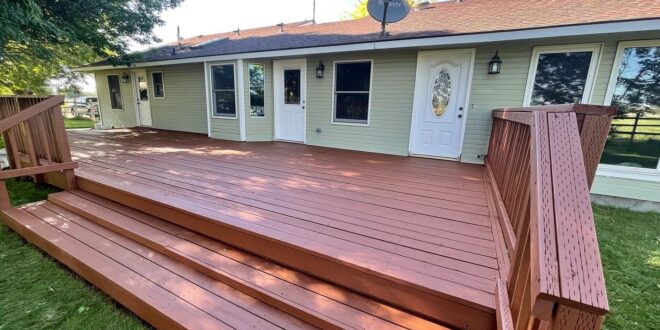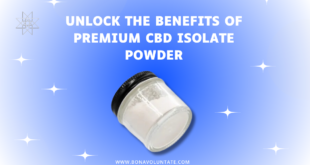Regarding residential exterior painting in Nampa, a good and long-lasting finish depends critically on the weather conditions. Painting the front of a house improves curb appeal and shields your property from the elements, so transcending just cosmetic enhancement. Knowing how various weather conditions affect exterior painting will enable you to make wise decisions and properly get ready for your next painting project. This article will discuss how Nampa’s residential exterior painting is affected by the weather and provide doable advice on how to get ready for different conditions.
1. Knowing How Weather Affects Paint
The result of domestic exterior painting can be much influenced by the weather. Key elements influencing the drying time, adhesion, and general longevity of the paint are temperature, humidity, and precipitation: Before beginning a painting project, one must give these factors top attention to guarantee best outcomes.
- Temperature: Paints have designated ranges within which they excel. Extreme temperatures—that is, either too hot or too cold—can compromise the paint’s capacity for adhesion and uniform drying. Painting in particularly hot conditions, for example, could cause the paint to dry too rapidly, producing ugly brush marks and an uneven surface. Painting in cold conditions, on the other hand, can slow down the drying process and raise the possibility of inadequate curing of the paint.
- Humidity: External painting depends much on humidity as well. Longer drying times and possible problems with paint application could follow from high humidity. Too much moisture in the air could make the paint tacky or lead bubbles and blisters to develop. Conversely, very dry environments could cause the paint to evaporate quickly, therefore affecting its lifetime and function.
- Precipitation: Rain and other kinds of precipitation can negatively influence the drying process and paint adhesion to the surface. Painting on days when rain is forecast or if there is likelihood of dew developing overnight should be avoided since this will impair the paint work and cause peeling or flaking.
2. Getting Ready for Shifting Seasons
From sweltering summers to frigid winters, Nampa’s climate can vary greatly year-round. Making sure your house exterior painting project is successful depends on your being ready for these seasonal variations. Here is how one gets ready for every season:
- Spring: Spring is frequently the perfect season for outside painting in Nampa. The low humidity and mild temperatures make paint application ideal. Still, be aware of possible spring showers that can cause problems for your project. Before painting, make sure the surface is dry; then, give enough time for the paint to cure before the next rain.
- Summer: Summer delivers better humidity and more mild temps. Although the warm weather could hasten the drying of the paint, improper management of it might cause problems such as paint bubbling or pelling. Choose a moderate-temperature time of day to fight this, and steer clear of painting at the height of the day. See the manufacturer’s advice on temperature ranges.
- Fall: Fall is another great time for outside painting since lower humidity and colder temperatures define this season. But as the temperature starts to decrease, you have to complete your project before temps fall too low. Make sure the paint dries and cures enough time before any freezing or frost sets in.
- Winter: Winter offers the most difficult circumstances for Nampa’s house exterior painting. The performance of the paint can be much affected by low temperatures and higher moisture content. If painting in winter is inevitable, make sure the surface is completely dry before application and select a paint meant for colder temperatures. Watching weather forecasts is also rather important to prevent painting during heavy rain or snow.
3. Selecting Correct Paint for Various Climate Conditions
A good and long-lasting finish depends on choosing the correct paint. Various kinds of paint are developed to excel under particular temperature ranges. This little guide will assist you in selecting the suitable paint for different situations:
- Acrylic Paints: Acrylic paints are flexible and hold great performance in a variety of environmental settings. In places with high humidity and changing temperatures, they are especially appropriate. Furthermore well-known for their great adherence and mildew and fade resistance are acrylic paints.
- Oil-Based Paints: One of the most durable and weather-resistant paints available is oil-based ones. For places with harsh temperatures or high moisture content, they are a wise choice. They might, however, necessitate more careful preparation and cleanup and dry slower.
- Elastomeric Paints: Particularly flexible and able to fill in minor surface cracks and gaps, elastomeric paints For places vulnerable to movement or expansion and contraction brought on by temperature variations, they are perfect. Since elastomeric paints resist mildew and water as well, they are fit for humid surroundings.

4. Exterior Painting Surface Preparation
Your paint will adhere well and last for years to come only if you properly prepare the surfaces. The surface preparation procedure might be affected by the weather; so, it is advisable to follow these guidelines:
- Cleaning: Thorough surface cleaning will help to eliminate mildew, filth, and grime. Exterior cleaning calls for a power washer or a strong detergent solution. Before painting, ensure the surface is totally dry.
- Repairing: Look over the surface for any damage—including holes, cracks, or peeling paint. Fix these problems first to produce a smooth, level surface for painting. To guarantee ideal adhesion, fill any voids with a suitable filler and sand the surface.
- Priming: Particularly if you are dealing with a new or previously unpainted surface, prep the surface before painting. A primer offers a consistent basis for the topcoat and helps to increase paint adhesion. Select a primer appropriate for the paint you are using and the climate.
5. Scheduling Your Painting Project
Residential exterior painting in Nampa calls for very precise timing. Think on the following ideas to guarantee the success of your project:
- Review the Weather Forecast: See the weather forecast to select a time when the conditions are good. Steer clear of painting on days with high humidity, intense heat, or a likelihood of precipitation.
- Plan for Drying Time: Plan for enough drying time between paint layers and before the painted surface is exposed to elements. Drying times should be followed manufacturer specifications; make sure the paint is completely cured before exposing it to heavy dew or rain.
- Think About Daylight Hours: Schedule your painting project to maximize them. Depending on the size of the project, make sure you have adequate time to finish the task in one day or across several days.
6. Often Asked Questions Regarding Exterior Painting and Weather
Can I paint my home’s exterior during the rainy season?
Painting is best avoided during the rainy season or when rain is predicted. Moisture can influence paint’s drying and curing, thereby causing possible problems including bubbling or peeling. Should painting be required during the rainy season, make sure the surface is dry before application and choose a paint designed especially for damp situations.
How do I know if the temperature is suitable for exterior painting?
Consult the recommendations for the appropriate temperature range for application made by the paint manufacturer. Most paints work best generally between 50°F and 85°F (10°C and 30°C). To guarantee best results, stay away from painting in excessive heat or cold.

7. Conclusion
The success of domestic exterior painting projects in Nampa is much influenced by the state of the weather. Understanding how temperature, humidity, and precipitation affect paint performance can help you to prepare and get a gorgeous and long finish for your house. Select the appropriate paint for the environment, correctly clean the surface, and schedule your project to coincide with ideal weather. Your exterior painting project will improve the look of your house and shield it from the elements for many years to come with meticulous planning and attention to detail.
 Personal Finance and Attractive Interest Rates Unlock Smart Savings with Low Rates and Expert Financial Tips
Personal Finance and Attractive Interest Rates Unlock Smart Savings with Low Rates and Expert Financial Tips







